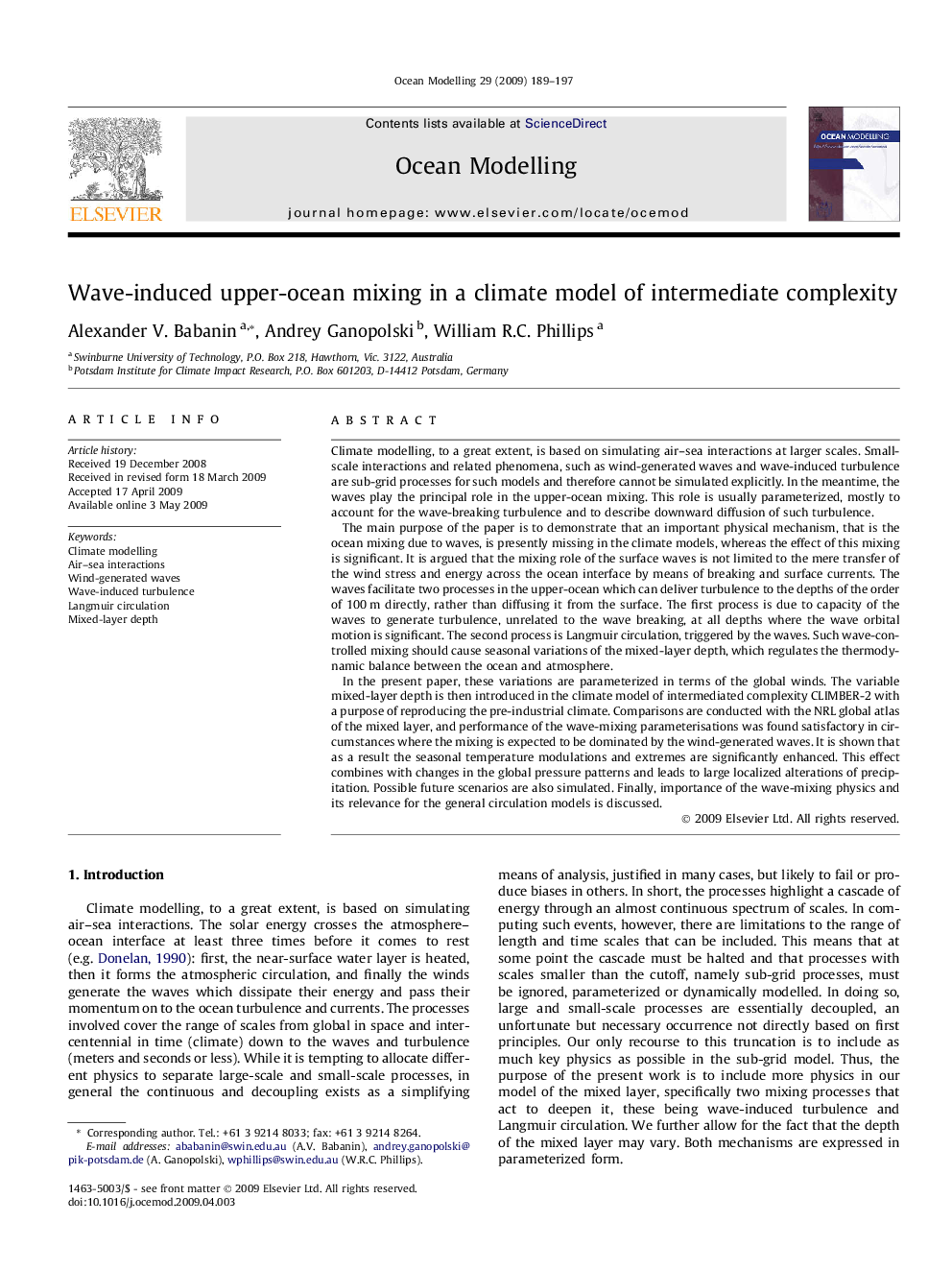| کد مقاله | کد نشریه | سال انتشار | مقاله انگلیسی | نسخه تمام متن |
|---|---|---|---|---|
| 4552570 | 1328735 | 2009 | 9 صفحه PDF | دانلود رایگان |

Climate modelling, to a great extent, is based on simulating air–sea interactions at larger scales. Small-scale interactions and related phenomena, such as wind-generated waves and wave-induced turbulence are sub-grid processes for such models and therefore cannot be simulated explicitly. In the meantime, the waves play the principal role in the upper-ocean mixing. This role is usually parameterized, mostly to account for the wave-breaking turbulence and to describe downward diffusion of such turbulence.The main purpose of the paper is to demonstrate that an important physical mechanism, that is the ocean mixing due to waves, is presently missing in the climate models, whereas the effect of this mixing is significant. It is argued that the mixing role of the surface waves is not limited to the mere transfer of the wind stress and energy across the ocean interface by means of breaking and surface currents. The waves facilitate two processes in the upper-ocean which can deliver turbulence to the depths of the order of 100 m directly, rather than diffusing it from the surface. The first process is due to capacity of the waves to generate turbulence, unrelated to the wave breaking, at all depths where the wave orbital motion is significant. The second process is Langmuir circulation, triggered by the waves. Such wave-controlled mixing should cause seasonal variations of the mixed-layer depth, which regulates the thermodynamic balance between the ocean and atmosphere.In the present paper, these variations are parameterized in terms of the global winds. The variable mixed-layer depth is then introduced in the climate model of intermediated complexity CLIMBER-2 with a purpose of reproducing the pre-industrial climate. Comparisons are conducted with the NRL global atlas of the mixed layer, and performance of the wave-mixing parameterisations was found satisfactory in circumstances where the mixing is expected to be dominated by the wind-generated waves. It is shown that as a result the seasonal temperature modulations and extremes are significantly enhanced. This effect combines with changes in the global pressure patterns and leads to large localized alterations of precipitation. Possible future scenarios are also simulated. Finally, importance of the wave-mixing physics and its relevance for the general circulation models is discussed.
Journal: Ocean Modelling - Volume 29, Issue 3, 2009, Pages 189–197